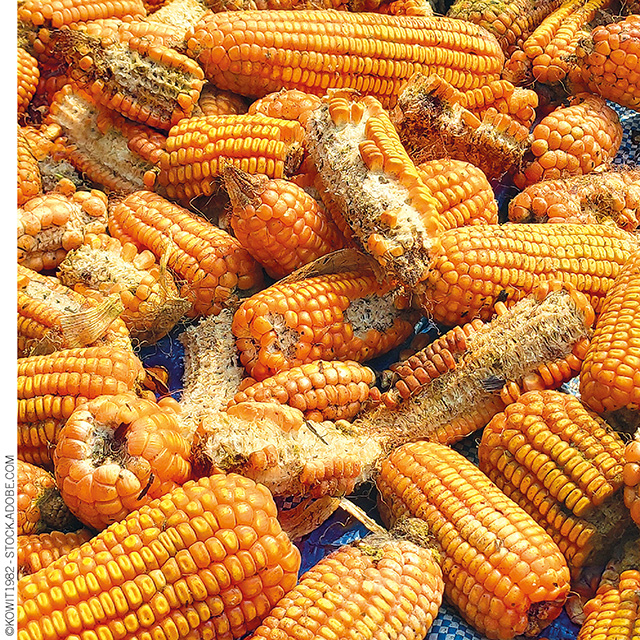Mycotoxins are on the rise. These toxins can be found in everyday foods such as corn, wheat, soy, peas, and peanuts, and can cause acute and long-term health effects if ingested. Additionally, they are heat tolerant, meaning they can be present in foods that are processed and prepared under conventional temperatures (80°-121°C), affecting the finished product.
Mycotoxins impact a number of commodities including grains, produce, spices, alcohol, and coffee. They can even reach dairy products through secondary exposure from animal feed. Further, these toxins are resistant to decomposition and are not removed by traditional food safety measures such as cooking, washing, or sanitizing.
Not only do they impact humans, but they also put many pets at risk, as they affect core pet food ingredients. Testing pet food is especially important, because pets typically eat the same food every day, and their food is traditionally stored at room temperature and served at the floor level.
There are six major types of mycotoxins that are consistently detected in food and pose safety risks: aflatoxins, trichothecenes, zearalenone, fumonisins, ochratoxins, and patulin. The side effects vary from food poisoning to cancers and long-term health issues.
Why Are Mycotoxins on the Rise?
Rain creates a damp environment for mycotoxin growth. A recent study, published in late 2022 in the journal Geophysical Research Letters (doi: 10.1029/2022GL099955), concludes that climate change is causing more intense rainfall across the country. In tandem, an uptick in consumer demand has trickled down to manufacturers and farmers who, in adapting to deliver more sourcing materials, are extending the growing season. Farmers cannot wait for the dry conditions to balance the consumer demand, which has exacerbated the problem. This has created a perfect storm in which mycotoxins can thrive, resulting in more food safety concerns across the supply chain.
Dietary Habits Have a Direct Impact
Food is a circular economy: Consumer demand and dietary habits drive agriculture production, and so on. Dietary shifts toward alternative meats and vegan-based meals increase demand for raw materials such as soy and pea protein. A March 2022 report from Acosta, a research firm based in Jacksonville, Fla., concluded that 40% of consumers purchased plant-based meat and/or dairy products within the prior six months.
As a result, more farmers are expanding their crop offerings to support this trend. As consumer demand increases, processors need product more rapidly and, in some cases, farmers are harvesting prematurely, before their crops dry out. As this trend expands, producers will likely try to harvest in new areas that may be susceptible to mycotoxin production.
Food Testing Poised for Growth
Food testing is critical to verify that foods that are at a higher risk of containing mycotoxins are not reaching consumers. The goal is to get more testing upstream and catch mycotoxins early on. Domestic grain elevators present a strong testing location, as it consolidates supply across various suppliers. Inspectors at the beginning of the process they can scan shipping containers and conduct sampling for analysis at the source. The key is for food inspectors to be efficient, providing quick turnaround for customers. It’s equally important that testing is accessible across all geographies, especially as farming areas expand and new crops are established.
Preventing Mycotoxins
There are things we can do today and in the future to prevent the spread of mycotoxins and ensure food safety. In the short-term, strong testing practices and procedures must be put in place in food manufacturing plants to ensure that mycotoxins don’t reach store shelves. Regulations are already in place to ensure that this occurs at manufacturing facilities. Farther up the chain, preventive measures can help reduce incidence. Certification and employee training comprise the first step, informing suitable areas to grow crops, seasonality, and best practices such as separating lots, depending on the crop. Armed with this knowledge, we can reduce the risk of mycotoxin exposure early in the process, as opposed to discovering contaminated foods at the end of the production cycle.
ACCESS THE FULL VERSION OF THIS ARTICLE
To view this article and gain unlimited access to premium content on the FQ&S website, register for your FREE account. Build your profile and create a personalized experience today! Sign up is easy!
GET STARTED
Already have an account? LOGIN

